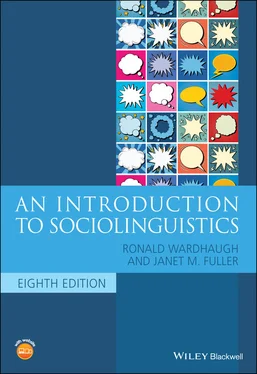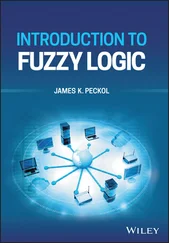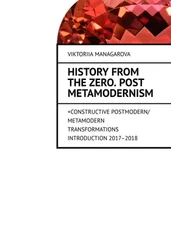5 Alfaraz, G. G. (2018). Framing the diaspora and the homeland: Language ideologies in the Cuban diaspora. International Journal of the Sociology of Language 254: 49–69.
6 Alfaraz, G. G. and A. Mason (2019). Ethnicity and perceptual dialectology: Latino awareness of US regional dialects. American Speech 94(3): 352–379.
7 Androutsopoulos, J. (2006). Introduction: Sociolinguistics and computer‐mediated communication. Journal of Sociolinguistics 10: 419–438.
8 Angouri, J. (2016). Online communities and communities of practice. In Alexandra Georgakopoulou and Tereza Spilioti (eds.), The Routledge Handbook of Language and Digital Communication. London: Routledge, 323–337.
9 Bauer, L. and P. Trudgill (eds.) (1998). Language Myths. Harmondsworth: Penguin Books.
10 Baxter, J. (2002). Competing discourses in the classroom: A post‐structuralist discourse analysis of girls’ and boys’ speech in public contexts. Discourse & Society 13(6): 827–842.
11 Bucholtz, M. (1999). ‘Why be normal?’ Language and identity practices in a community of nerd girls. Language in Society 28: 203–223.
12 Bucholtz, M., N. Bermudez, V. Fung et al. (2007). Hella Nor Cal or Totally So Cal? The perceptual dialectology of California. Journal of English Linguistics 35(4): 325–352.
13 Bucholtz, M. and K. Hall (2005). Identity and interaction: A sociocultural linguistic approach. Discourse Studies 7(4–5): 585–614.
14 Cameron, D. (1995). Verbal Hygiene. London: Routledge.
15 Campbell‐Kibler, K. (2012). The implicit association test and sociolinguistic meaning. Lingua 122(7): 753–763.
16 Carter, P. M. (2013). Poststructuralist theory and sociolinguistics: Mapping the linguistic turn in social theory. Language and Linguistics Compass 7(11): 580–596.
17 Chomsky, N. (1965). Aspects of the Theory of Syntax. Cambridge, MA: MIT Press.
18 Cochrane, L. E. (2017). An imagined community of practice: Online discourse among wheelchair users. Linguistik Online 87: 8/17.
19 Cooper, R. L. (ed.) (1975). Language Attitudes II, vol. 6. The Hague: Mouton.
20 Davies, B. (2005). Communities of practice: Legitimacy not choice. Journal of Sociolinguistics 9: 557–581.
21 Dickinson, J. (2010). Language for the market, the nation, or the margin: Overlapping ideologies of language and identity in Zakarpattia. International Journal of the Sociology of Language 201: 53–78.
22 Eckert, P. (1988). Adolescent social structure and the spread of linguistic change. Language in Society 17(2): 183–207.
23 Eckert, P. (2000). Linguistic Variation as Social Practice: The Linguistic Construction of Identity in Belten High. Oxford: Blackwell.
24 Eckert, P. and S. McConnell‐Ginet (1998). Communities of practice: Where language, gender, and power all live. In J. Coates (ed.), Language and Gender: A Reader. Oxford: Blackwell.
25 Eckert, P. and S. McConnell‐Ginet (2007). Putting communities of practice in their place. Gender & Language 1: 27–37.
26 England, L. (2018). Communities of practice. In John I. Liontas et al. (eds.), The TESOL Encyclopedia of English Language Teaching. Hoboken, NJ: John Wiley & Sons, Inc., 1–7.
27 Errington, J. (2000). Ideology. Journal of Linguistics Anthropology 9(1–2): 115–117.
28 Foucault, M. (1980). Power/Knowledge: Selected Interviews and Other Writings, 1972–1977. New York: Pantheon.
29 Fuller, J. M. (2012). Bilingual Pre‐teens: Competing Ideologies and Multiple Identities in the U.S. and Germany. New York: Routledge.
30 Fuller, J. M. (2019). Ideologies of language, bilingualism and monolingualism. In A. De Houwer and L. Ortega (eds.), The Cambridge Handbook of Bilingualism. Cambridge: Cambridge University Press, 119–134.
31 Gal, S. and J. Irvine (1995). The boundaries of languages and disciplines: How ideologies construct difference. Social Research 62: 996–1001.
32 Gee, J. P. (2005). Meaning making, communities of practice, and analytical toolkits. Journal of Sociolinguistics 9: 590–594.
33 Georgakopoulou, A. (2006). Postscript: Computer‐mediated communication in sociolinguistics. Journal of Sociolinguistics 10(4): 548–557.
34 Graham, Sage Lambert (2007). Disagreeing to agree: Conflict, (im)politeness and identity in a computer‐mediated community. Journal of Pragmatics 39: 742–759.
35 Gumperz, J. J. (1971). Language in Social Groups. Stanford, CA: Stanford University Press.
36 Herring, S. (2001). Computer‐mediated communication. In Deborah Schiffrin, Deborah Tannen, and Heidi E. Hamilton (eds.), Handbook of Discourse Analysis. Oxford: Blackwell, 612–634.
37 Hymes, D. (2004). ‘In vain I tried to tell you’: Essays in Native American Ethnopoetics. Lincoln: University of Nebraska Press.
38 Jacquemet, M. (2019). Beyond the speech community: On belonging to a multilingual, diasporic, and digital social network. Language & Communication 68: 46–56.
39 Jones, L. (2011). ‘The only dykey one’: Constructions of (in)authenticity in a lesbian community of practice. Journal of Homosexuality 58: 719–741.
40 Kavanagh, B. (2016). Emoticons as a medium for channeling politeness within American and Japanese online blogging communities. Language & Communication 48: 53.
41 Kroskrity, P. (2000). Identity. Journal of Linguistic Anthropology 9(1–2): 111.
42 Kurzová, H. (2019). Defining the Central European convergence area. Slavic on the Language Map of Europe: Historical and Areal‐Typological Dimensions 333: 261.
43 Labov, W. (1972). Sociolinguistic Patterns. Philadelphia: University of Pennsylvania Press.
44 Lambert, W. E., R. C. Hodgson, R. C. Gardner, and S. Fillenbaum (1960). Evaluational reactions to spoken languages. Journal of Abnormal and Social Psychology 60(1): 44.
45 Liebscher, G. and J. Dailey‐O’Cain (2017). Contextualizing language attitudes: An interactional perspective. Language and Linguistics Compass 11(9): e12250.
46 Lindemann, S. and K. Moran (2017). The role of the descriptor ‘broken English’ in ideologies about nonnative speech. Language in Society 46(5): 649–669.
47 Lippi‐Green, Rosina (2012). English with an Accent: Language, Ideology and Discrimination in the United States. 2nd edn. New York: Routledge.
48 Locher, M. A. (2010). Introduction: Politeness and impoliteness in computer‐mediated communication. Journal of Politeness Research: Language, Behaviour, Culture 6: 1–5.
49 Long, D. and D. R. Preston (eds.) (2003). Handbook of Perceptual Dialectology, vol. 2. Amsterdam: John Benjamins.
50 Lyons, J. (ed.) (1970). New Horizons in Linguistics. Harmondsworth: Penguin Books.
51 Meadows, B. (2010). ‘Like my tutor and stuff, people I would talk to’: Laying claim to imagined national communities of practice in language learner discourse. Critical Inquiry in Language Studies 7: 88–111.
52 Mendoza‐Denton, N. (2008). Homegirls. Oxford: Blackwell.
53 Meyerhoff, M. and A. Strycharz (2013). Communities of practice. In J. K. Chambers and N. Schilling (eds.), The Handbook of Language Variation and Change. 2nd edn. Oxford: Wiley Blackwell, 428–447.
54 Milburn, T. (2015). Speech community. In Karen Tracy (ed.), The International Encyclopedia of Language and Social Interaction. Oxford: Wiley Blackwell, 1–5.
55 Milroy, L. (1980). Social network and language maintenance. In A. K. Pugh, V. J. Lee, and J. Swann (eds.), Language and Language Use: A Reader. London: Heinemann Educational.
56 Milroy, L. (1987). Language and Social Networks. 2nd edn. Oxford: Blackwell.
57 Milroy, L. and M. Gordon (2008). Sociolinguistics: Method and Interpretation. 2nd edn. Oxford: Wiley Blackwell.
58 Milroy, L. and C. Llamas (2013). Social networks. In Jack K. Chambers and Natalie Schilling (eds.), The Handbook of Language Variation and Change. 2nd edn. Oxford: Wiley Blackwell, 409–427.
Читать дальше




![Andrew Radford - Linguistics An Introduction [Second Edition]](/books/397851/andrew-radford-linguistics-an-introduction-second-thumb.webp)







